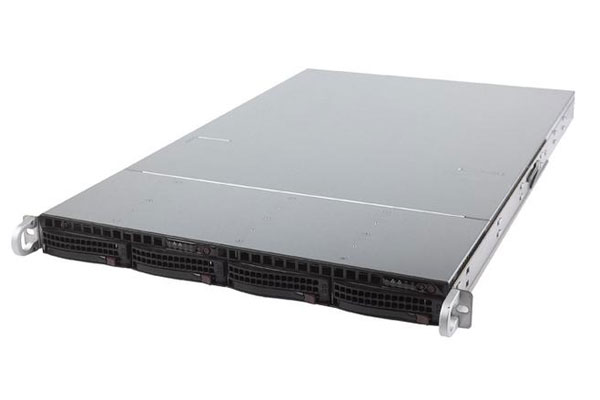Boston 3000GP - AMD Shanghai Server
This system from Boston is the first we've seen to feature AMD's Shanghai processor. Does it deliver on its power saving promise?


Four of the very latest quad-core Opteron processors, dual motherboards, a low power consumption, full remote server management and all in a 1U rack chassis - what more do you want?

Just when you thought processing density in your rack server cabinet couldn't get any higher along comes Boston's new 3000GP and its innovative design which is capable of doubling capacity. In this review not only do we take a closer look at Supermicro's Twin System technology, but also bring you our first review of AMD's new Shanghai quad-core processor in a production server.
Shanghai is AMD's first quad-core Opteron processor family to use the 45nm manufacturing process and is directly targeting Intel's 5400 and 7400 Xeon families. Whereas Intel runs its DP and MP processor developments separately, AMD will be announcing both 2300 DP and 8300 MP variants simultaneously. AMD is well aware that it needs to get this launch right as customer confidence took a real knock after the Barcelona fiasco with its delayed deliveries and bugs.
The new processors have 6MB of shared L3 cache and AMD has opted to stick with Socket F1 1207 compatibility so it's supported by current nVidia and Broadcom chipsets and is effectively a drop-in upgrade requiring a BIOS update. It will not be supporting the new HT-3 HyperTransport interconnect and AMD advised us that in its DP solutions there will no significant performance benefits over HT-1.
The initial range has a TDP of 75W with 105W SE and 55W HE versions coming later. Memory support for Shanghai has improved from 667MHz to 800MHz DDR2 but you'll have to wait until 2010 if you want DDR3 support as this is expected to be introduced in the San Paolo chip which will also double L3 cache to 12MB.
Moving on to the 3000GP itself and at first glance it looks to offer a remarkable specification for such a slim-line package. The key feature here is the 1U chassis is home to two separate motherboards and with dual sockets on each one it can deliver up to sixteen cores.
With the lid removed all becomes clear as the two boards run the length of the chassis with a shared power supply module located between them. Other than power, each board is totally independent and both came with a pair of 2.6GHz Opteron 2382 processors installed. The price of the review system includes 8GB of DDR2 memory for each server and with eight DIMM sockets per processor this can be expanded to 128MB.
The nVidia chipset also looks after storage where it provides an embedded four port SATA controller. A single backplane services the hard disks but each motherboard is wired through to its own pair of hard disks and also provides power from an auxiliary socket.
RAID options are more limited on the 3000GP as you only have two 3.5in. SATA drives per server so you can only go for a mirrored array for storage fault tolerance. However, Supermicro has other chassis options available that support up to eight SFF hard disks.
Get the ITPro daily newsletter
Sign up today and you will receive a free copy of our Future Focus 2025 report - the leading guidance on AI, cybersecurity and other IT challenges as per 700+ senior executives
Dave is an IT consultant and freelance journalist specialising in hands-on reviews of computer networking products covering all market sectors from small businesses to enterprises. Founder of Binary Testing Ltd – the UK’s premier independent network testing laboratory - Dave has over 45 years of experience in the IT industry.
Dave has produced many thousands of in-depth business networking product reviews from his lab which have been reproduced globally. Writing for ITPro and its sister title, PC Pro, he covers all areas of business IT infrastructure, including servers, storage, network security, data protection, cloud, infrastructure and services.
-
 Westcon-Comstor and Vectra AI launch brace of new channel initiatives
Westcon-Comstor and Vectra AI launch brace of new channel initiativesNews Westcon-Comstor and Vectra AI have announced the launch of two new channel growth initiatives focused on the managed security service provider (MSSP) space and AWS Marketplace.
By Daniel Todd Published
-
 Third time lucky? Microsoft finally begins roll-out of controversial Recall feature
Third time lucky? Microsoft finally begins roll-out of controversial Recall featureNews The Windows Recall feature has been plagued by setbacks and backlash from security professionals
By Emma Woollacott Published
-
 The UK government wants quantum technology out of the lab and in the hands of enterprises
The UK government wants quantum technology out of the lab and in the hands of enterprisesNews The UK government has unveiled plans to invest £121 million in quantum computing projects in an effort to drive real-world applications and adoption rates.
By Emma Woollacott Published